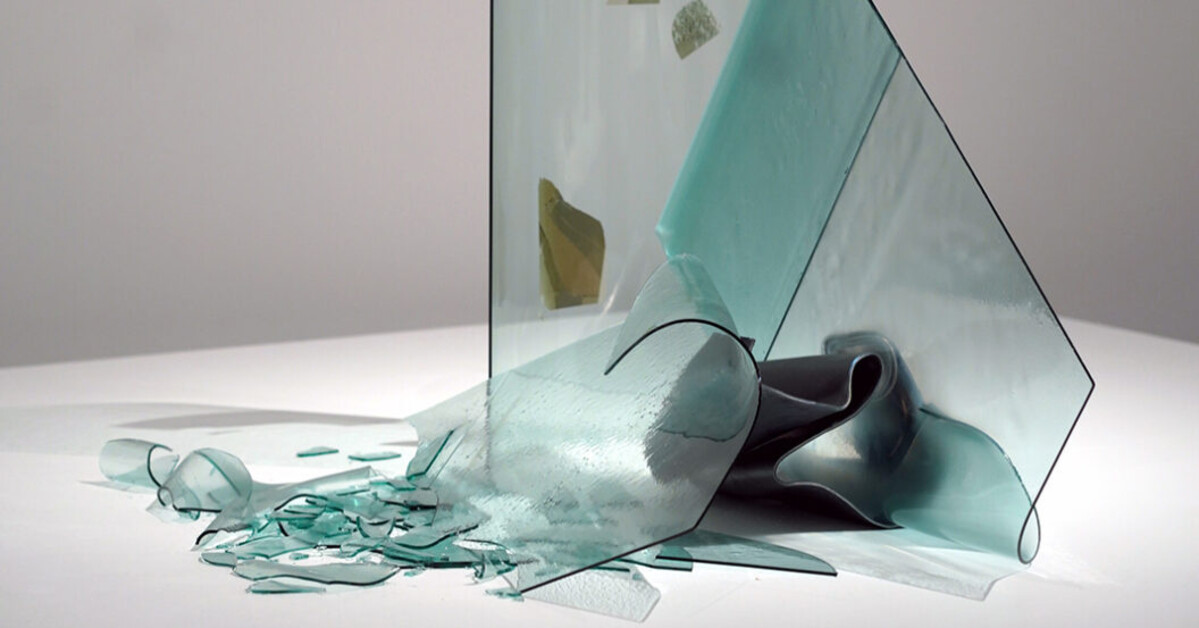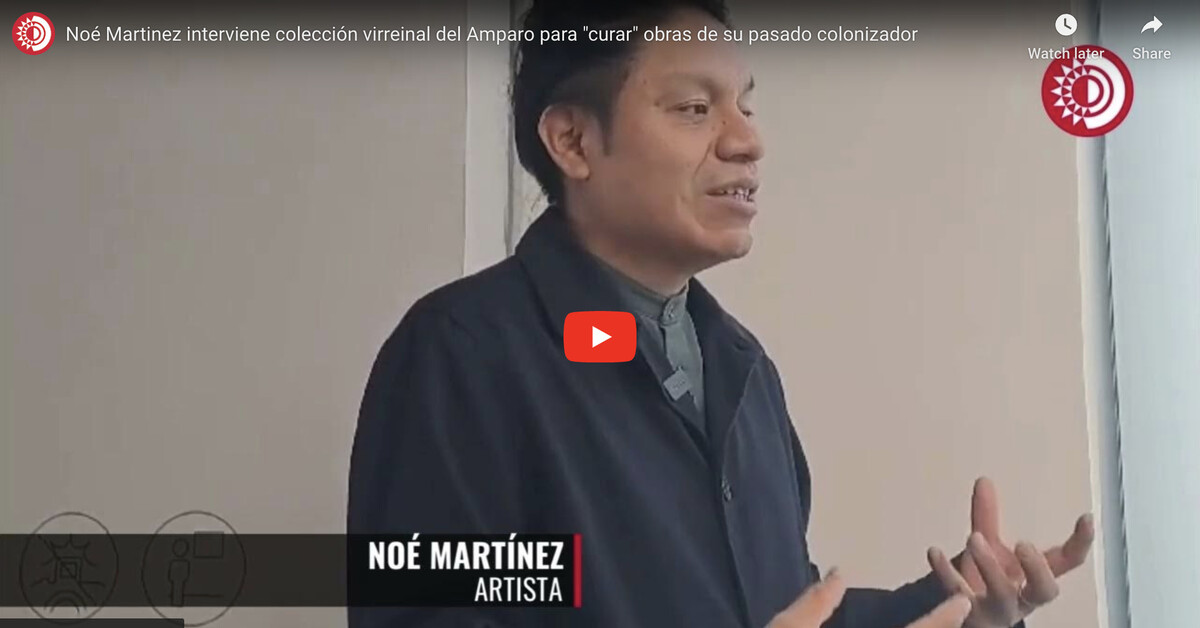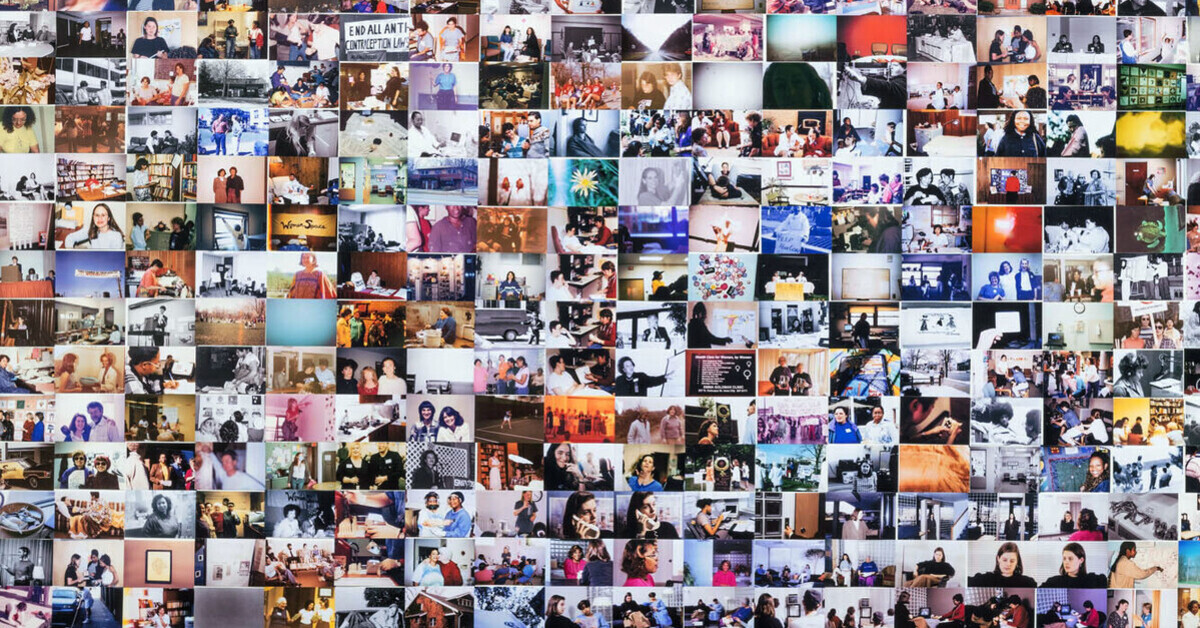A Look at the 2024 Whitney Biennial Through the Lens of the 1993 Edition
Observer / Aug 6, 2024 / by Elisa Carollo / Go to Original
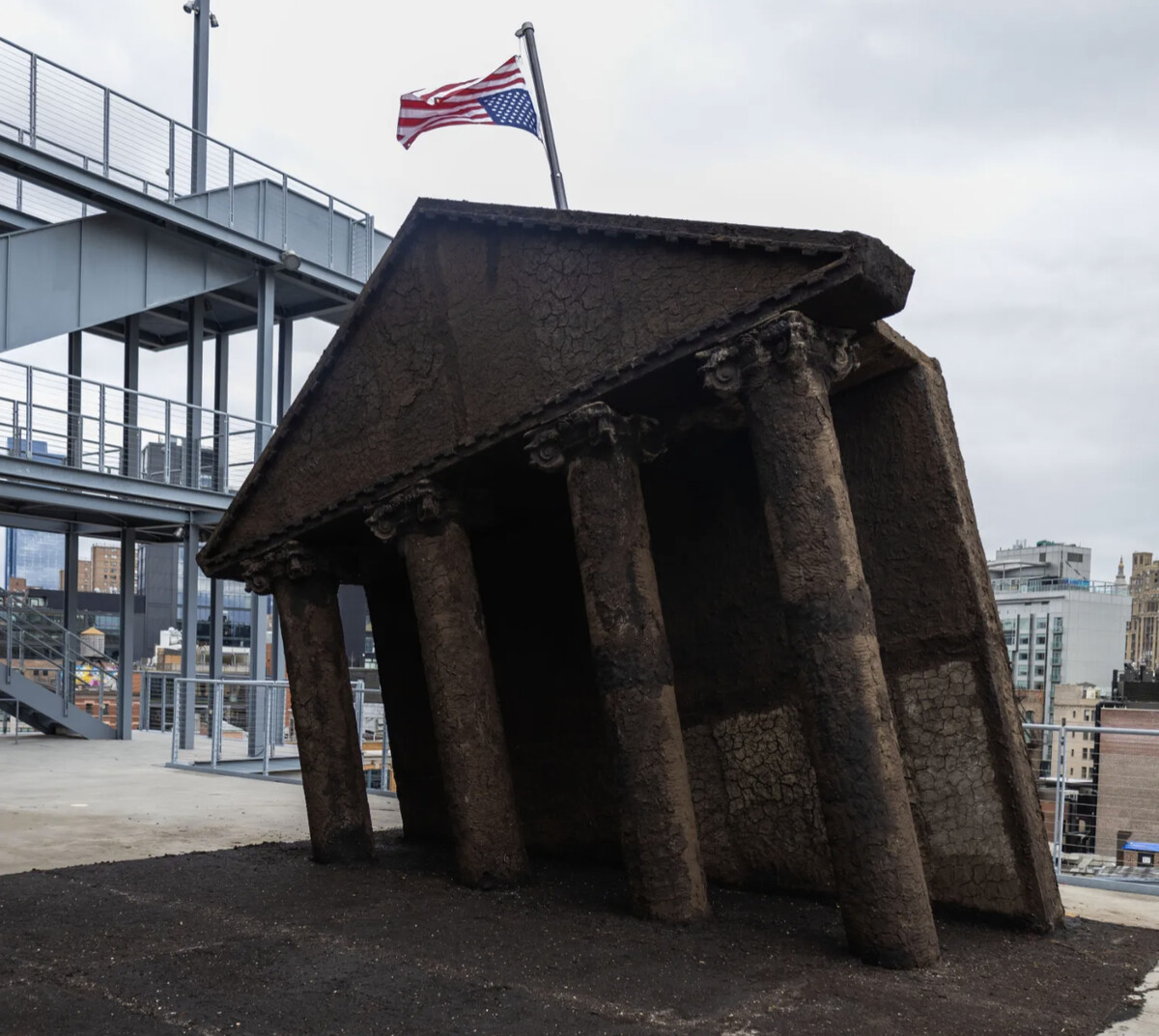
Kiyan Williams, Ruins of Empire II or The Earth Swallows the Master’s House, 2024. Photograph by Audrey Wang
Visiting the Whitney Biennial is considered one of the keys to understanding the state of the arts in America and the general feeling around current geopolitical and social events. As we enter the final week of this year’s Biennial, we wanted to offer a final review from a broader historical and cultural perspective, comparing the American landscape in which the controversial 1993 edition took place to the circumstances that inspired this year’s edition, and where that leaves us.
The 1993 edition, curated by Thelma Golden, John G. Hanhardt, Lisa Phillips and Elisabeth Sussman, was arguably one of those watershed moments, redefining the role of the Biennial itself and of American art institutions in general. As one of the first to give voice to people of color, women and other underrepresented groups and the first to fully engage with identity politics and the rich multicultural diversity of the United States, it was also one of the most criticized, inspiring massive public debate. Among the similarly mixed reviews received by the 2024 edition, curated by Chrissie Iles and Meg Onli, drawing comparisons can help us unpack some developments in American art and society that occurred in the three decades between the Biennials.
A different approach to identity politics and narratives
The 1993 edition happened as America was coming out of the first Gulf War and the Bush administration. Clinton’s inauguration was marked by the bombing of the World Trade Center, presaging larger threats to U.S. security, and in July, the LGBTQ community was threatened by his “Don’t Ask, Don’t Tell” policy.
Today, we are certainly not living in less “interesting” times, given the tension and drama surrounding the upcoming elections and global geopolitical uncertainty. But political and politicized messages and narratives are now spreading even more rapidly and pervasively through the digital space and social media. While this has democratized access to information, it has also led to growing confusion due to the prevalence of inaccurate information fueling increasing polarization of opinions.
Drawing on this specific context, the 2024 Whitney Biennial is still engaging with identity politics but also appears to have already capitulated to the unavoidable precarious nature of today’s “reality.” Suspended between virtual and physical narratives, between traces of bones and data seemingly composing our existence, the show attempts to confront a world where centuries-old systems of values, ideologies and institutions have been challenged but are still awaiting natural alternatives.
The tone of the 1993 show was immediately made clear with a welcoming work that invited visitors to wear admission tags designed by artist Daniel Joseph Martinez with the text “I can’t imagine ever wanting to be white” in a clear call for social consciousness around identity politics and different narratives of what it means to be “American.” In the same edition, Mike Kelley presented Untitled (6th Annual Luau), a series of large felt banners and replicas of posters encouraging gatherings to “strengthen and preserve the race” around colleges.
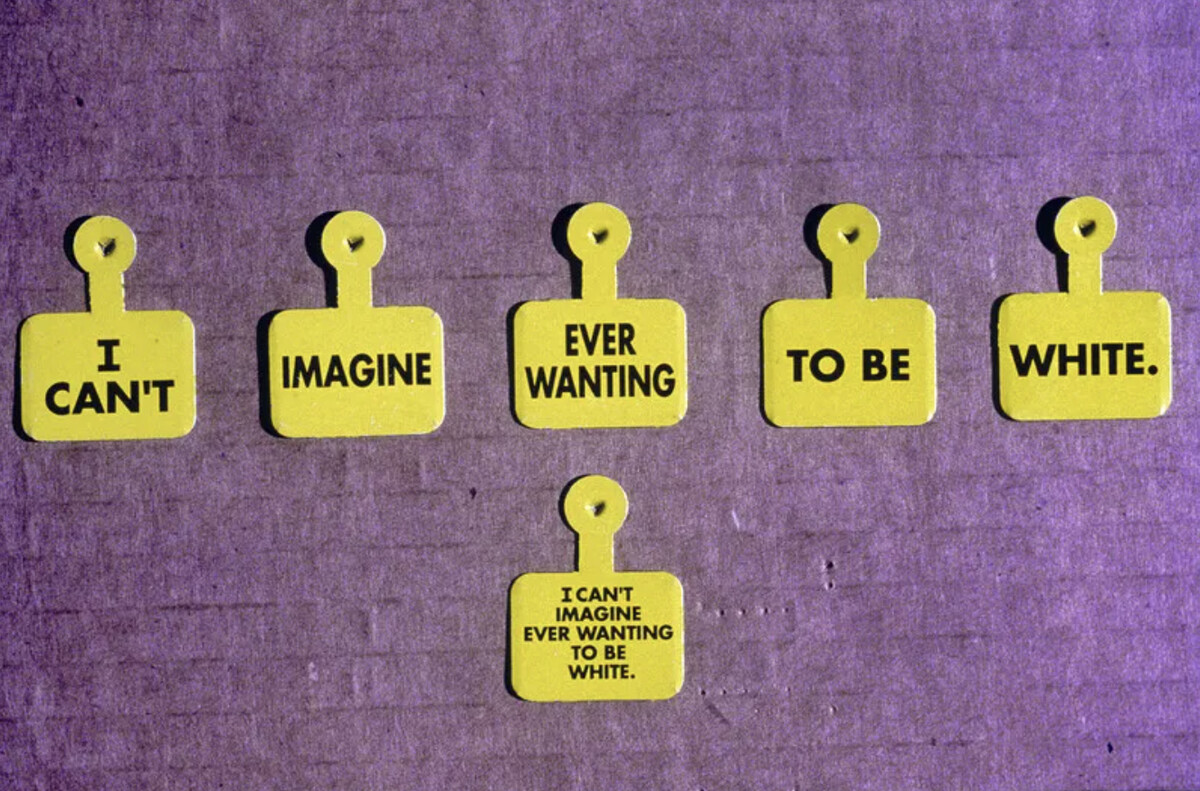
Daniel J. Martinez’s museum tags for the 1993 Whitney Biennial. ©Daniel J.Martinez
This year’s edition confronts more directly the end of the American myth and other secular ideologies. The first work visitors encounter is an American flag abandoned on a sofa by Ser Serpas that unequivocally denounces “the exhaustion of the American dream.” This message is reiterated in Kiyan William’s work, Ruins of Empire II or The Earth Swallows the Master’s House (2024), featuring a replica of the north façade of the White House made of topsoil that’s about to collapse. Inside, Charisse Pearlina Weston has wedged large sheets of smoked glass against the museum walls to suggest a moment of pause between the precarious suspension, growing risk and tension, and the coming collapse.
Further in, the Whitney Biennial artists in 2024 take a less direct and more subtle approach to undermining the status quo, constantly shifting between addressing urgent political issues and providing practical value. Still, one can perceive a pervasive feeling of cultural fatigue throughout: with their critical examination of today’s prevailing beliefs, most of the works ultimately recognize reality as an ideological construct made up of symbols and filled with contradictions and tensions, which the artists embrace and incorporate into their work.
While the 1993 edition started to problematize the “post-truth” society, the 2024 edition already proves how the only possible “truth” might be the endlessly multifaceted one that originated in the ceaseless flow of multiple narratives in media. This resulted in a confusing overexposure to data but also unprecedented possibilities of expression for all social and cultural groups.
An example of this problematization of the mediated reality is the immersive multiscreen installation by artist Isaac Julien, Once Again Status Never Die. Questioning the permeability and permanence of monuments as cultural and historical symbols by focusing on the dominant institutional narrative long surrounding African art, the work reveals biases perpetrated for years as exotic ethnographic artifacts, not having equal museum dignity of other cultural products.
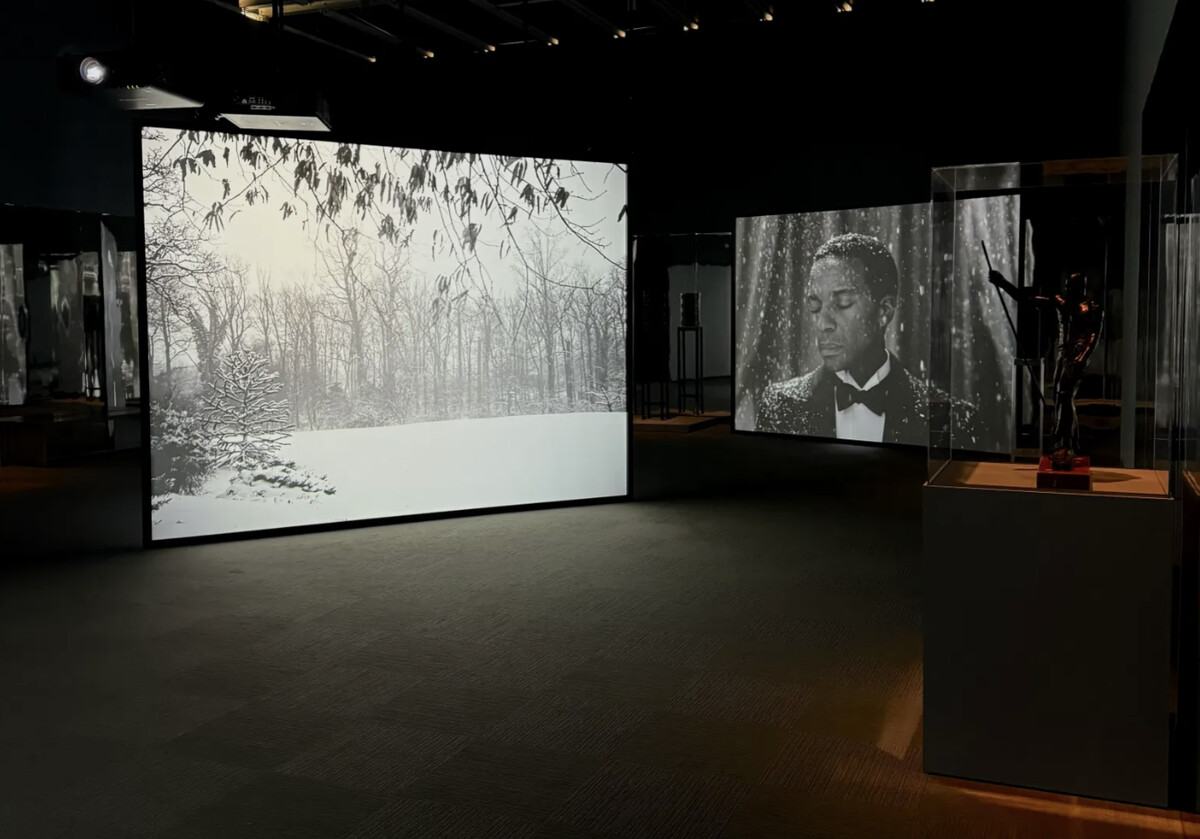
Isaac Julien, Once Again… (Statues Never Die), 2022. Photograph by Ashley Reese
A fracture between personal and collective
The fracture between personal and collective history, between the political and the individual, is another central theme of this year’s Whitney Biennial, linking it to the one in 1993.
One artwork that exemplifies this is Diane Severin Nguyen’s video installation, Nguyen, In Her Time (Iris’s Version) (2023-2024): the camera follows an actress as she rehearses a historical war film about the Nanjing Massacre of 1937 during the Second Sino-Japanese War (1937-45). In this phantasmagorical installation, lines between the present and historical narrations are blurred, exploring how history circulates in the present, mainly through popular media, partly as memory and partly as recreation or fan fiction.
The 2024 show also emphasizes the growing disconnect between architecture, public space and the unconscious, pointing out the consequences of the loss of stable symbolic reference points in contemporary urban spaces, as a bewildering video work by Dora Budor suggests. Pointing a lens at the major real estate projects of Hudson Yards, it points out the alienation commonly experienced in cities dominated by corporate architecture and gentrification.

Diane Severin, Nguyen, In Her Time (Iris’s Version), 2023–24. Photograph by Audrey Wang
Nevertheless, in the 2024 Biennial, we see some attempts to heal this fracture, protecting the relationship between society, culture and objects. A powerful example of this is a work by Eduardo Aparicio: a massive amber body containing ruins of everyday life that changes over time depending on the light and warmth of its environment, mimicking the cycle of generation and regeneration of collective memories. On the same floor, Sharon Hayes’s video piece Ricerche: four collects stories of a community but through an assemblage of interviews with elderly LGBTQ+ individuals, offering an assortment of possible experiences surrounding gender, sexuality and identity.
These types of works might remind one of Notes in the Margin of the Black Book (1991-93) by Glenn Ligon in the 1993 edition, which presented a wall of Robert Mapplethorpe’s Black Book photographs annotated by comments from diverse sources including the conservative U.S. Senator Jesse Helms, the Black cultural critic bell hooks and a bartender at a gay bar in an attempt to confront the complexity of identities shaped under dual systems of oppression (for instance, Black and gay).
Again, however, we see a difference in the tone: the artists in the 2024 Whitney Biennial have already abandoned all the anger of these claims we could see in 1993, aiming not to establish fixed universal messages about how things are but to pose questions about today’s common sense around categories like gender, race, identity and technology.
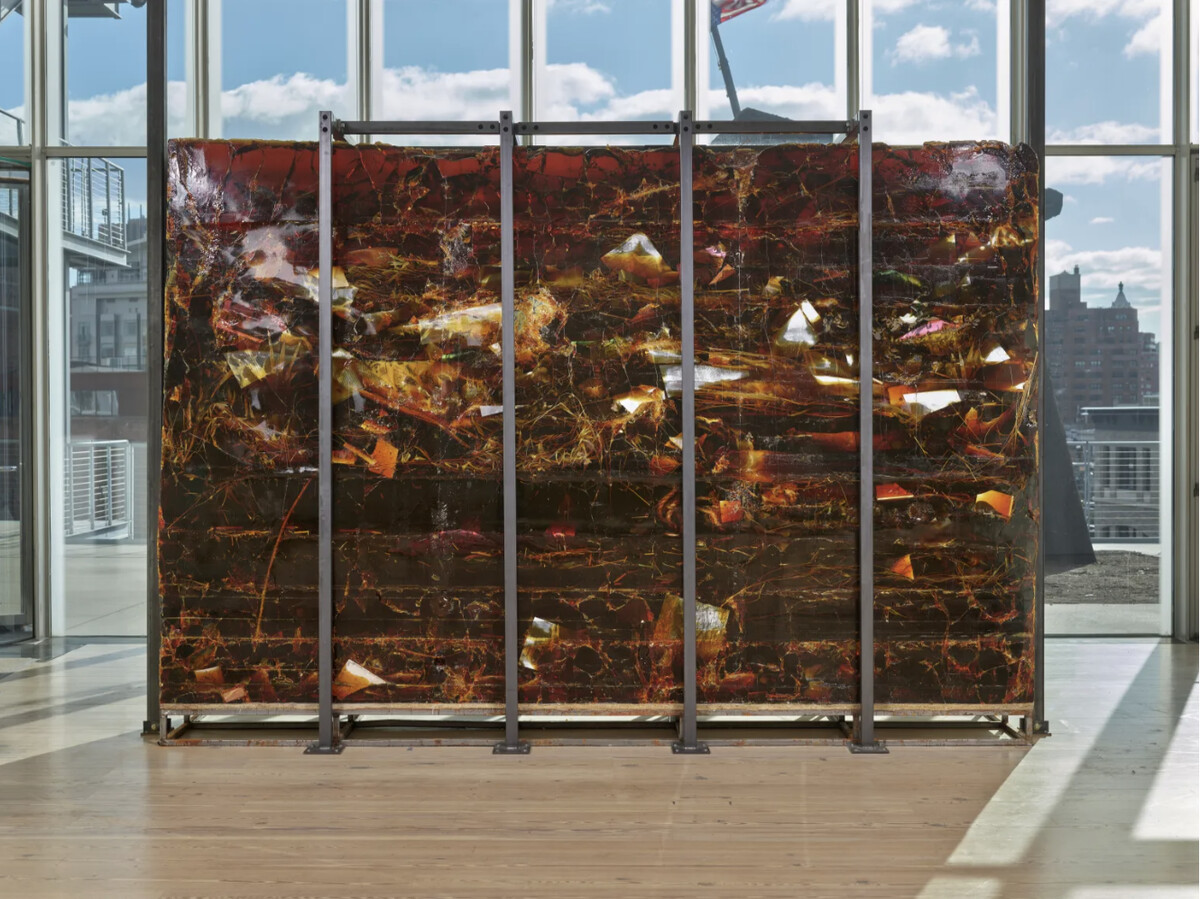
Eddie Rodolfo Aparicio, Paloma Blanca Deja Volar/White Dove Let Us Fly, 2024. Photograph by Ron Amstutz
A different approach to “Indigeneity”
It’s interesting to note that in the current state of confusion, many artists are turning to traditional knowledge as an alternative. They are approaching “Indigeneity” in a way very different way from the direct attacks on the lingering effects of colonial stereotypes shown in 1993, for example in the shocking collaborative performance work Two Undiscovered Afromeridias by Guillermo Gomez-Peña and Coco Fusco. It was a highly provocative critique of border policies and the exclusionary practices that often accompanied nationalistic and ethnocentric ideologies, presented in a performative and participatory action that tested and problematized the dynamics involved in embracing diverse cultural experiences.
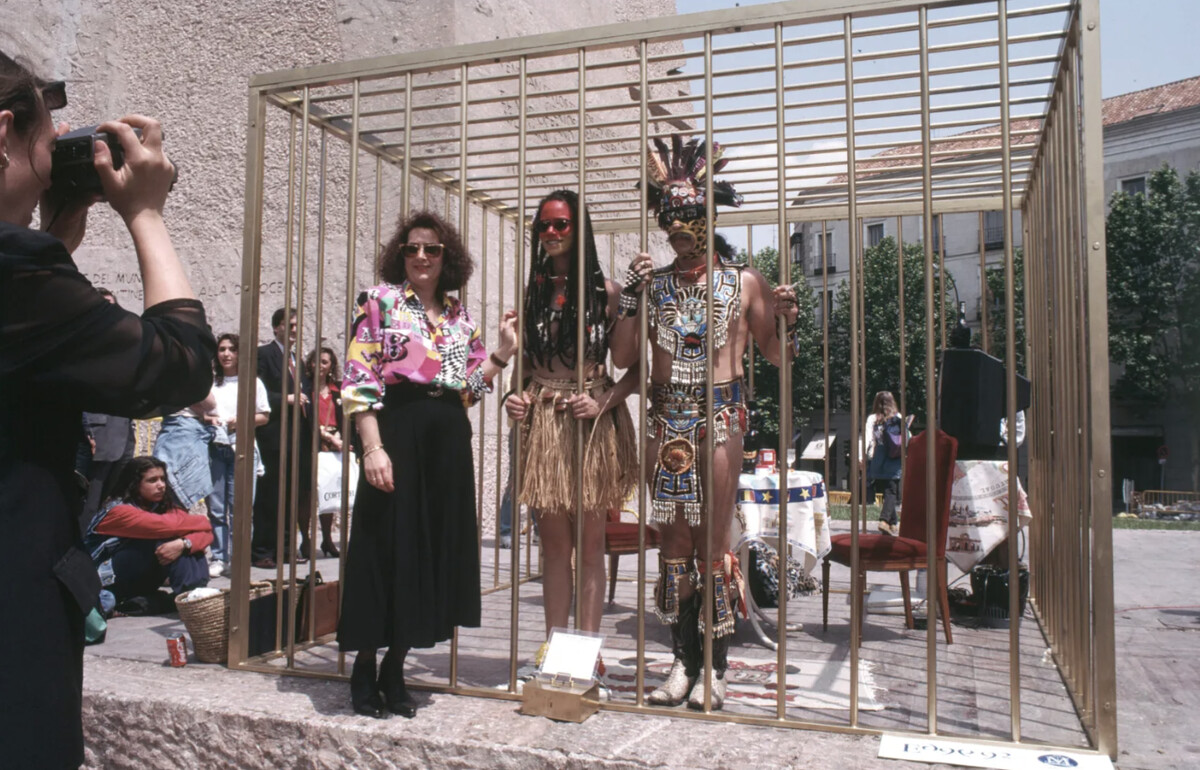
Two Undiscovered Amerindians Visit the West was a critical investigation of the ethnographic display of Indigenous artifacts and people that has been taking place for centuries in the West. Photo: Nancy Lytle
Today we observe instead an effort by the art world to include those Indigenous narratives as new points of reference for the Western world, looking to the “primordial” authenticity of Indigenous wisdom and ancient technologies as possible alternatives for collective survival. One example is Dionne Lee’s video, Challenger Deep, in which the camera focuses on the artist’s hands as she reconnects with the earth and natural elements using a rudimentary tool to find water.
On the same floor, Cannupa Hanska Luger (who is of Mandan, Hidatsa, Arikara, Lakota and European descent) celebrates native technology with an installation featuring a tent structure he describes as “not as upturned…our current world is upside down” and celebrating Native technologies as tools for a more sustainable living while we’ve lost our equilibrium on the planet. Meanwhile, another video by Mapuche artist Seba Calfuqueo, TRAY TRAY KO (2022), encourages intimate reconnection and ritual symbiosis with the natural element. In it, she ritualistically pulls a long blue cloth imitating a waterfall through a protected forest in Chile.
As a leading theme in the current Venice Biennale 2024, this new approach to Indigeneity within contemporary art might allow us to overcome postcolonial discourse for a more intersectional and horizontal multiculturalism that acknowledges common roots of knowledge and spirituality.
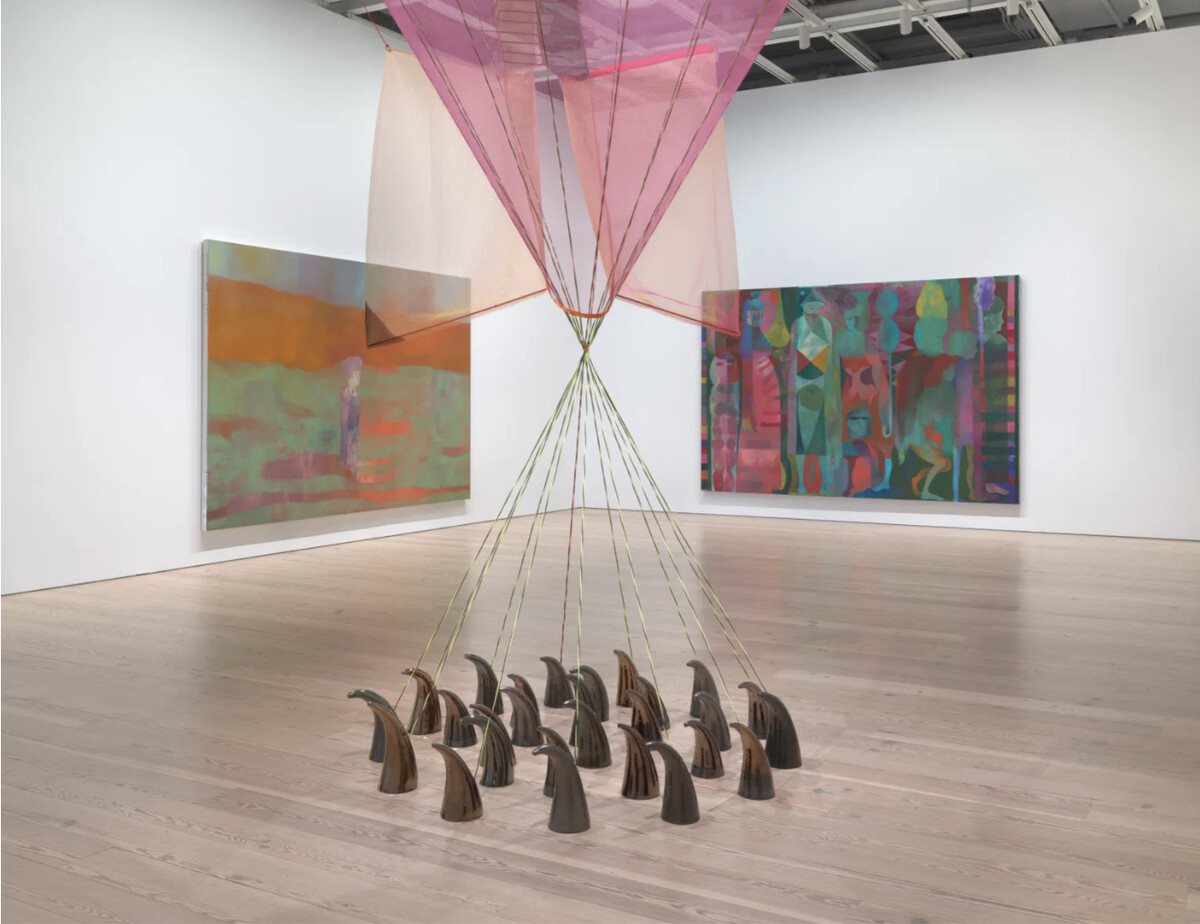
From left to right: Maja Ruznic, Deep Calls to Deep, 2023; Cannupa Hanska Luger, Uŋziwoslal Wašičuta (from the series ‘Future Ancestral Technologies’), 2021; Maja Ruznic, The Past Awaiting the Future/Arrival of Drummers, 2023. Photograph by Ron Amstutz
Technology vs. techne
The Whitney Biennial of 1993 was one of the first to move multimedia and video works to the center. In contrast, even with its curatorial statement, this year’s edition seems to engage much less with digital and technology. It instead gives a significant presence of materiality, which then translates into the handcrafted weavings of organic and metallic fibers by Mexican artist Ektor Garcia, the highly tactile hanging abstraction by artist Suzanne Jackson and Rose B Simpson’s sculptures, Reverence, which create an energetic circle of protection and solidarity: “a search for tools to use to heal the harms I have experienced as a human being in our postmodern and post-colonial age: the postcolonial on, stereotyping and disarming detachment of our creative selves through the ease of modern technology.”
Even when the works on show address the digital realm, this is evoked in the space and transformed into a physical experience, as in the yellow metaverse imagined by P. Staff in Afferent Nerves and A Travers Le Mal (2023).
While the 1993 Biennial was criticized for its lack of paintings, this year’s edition presents them in a fair quota: punctuating the heavily conceptual or ritualistic tone around the rooms, we have some more pleasing geometric/hard-edge abstractions, such as those by Mavis Pusey or Takako Yamaguchi. Their crystalline aesthetic reminds one of the urge to “return to order” of the modernist utopia, perhaps as a reaction to the global chaos that surrounds us.
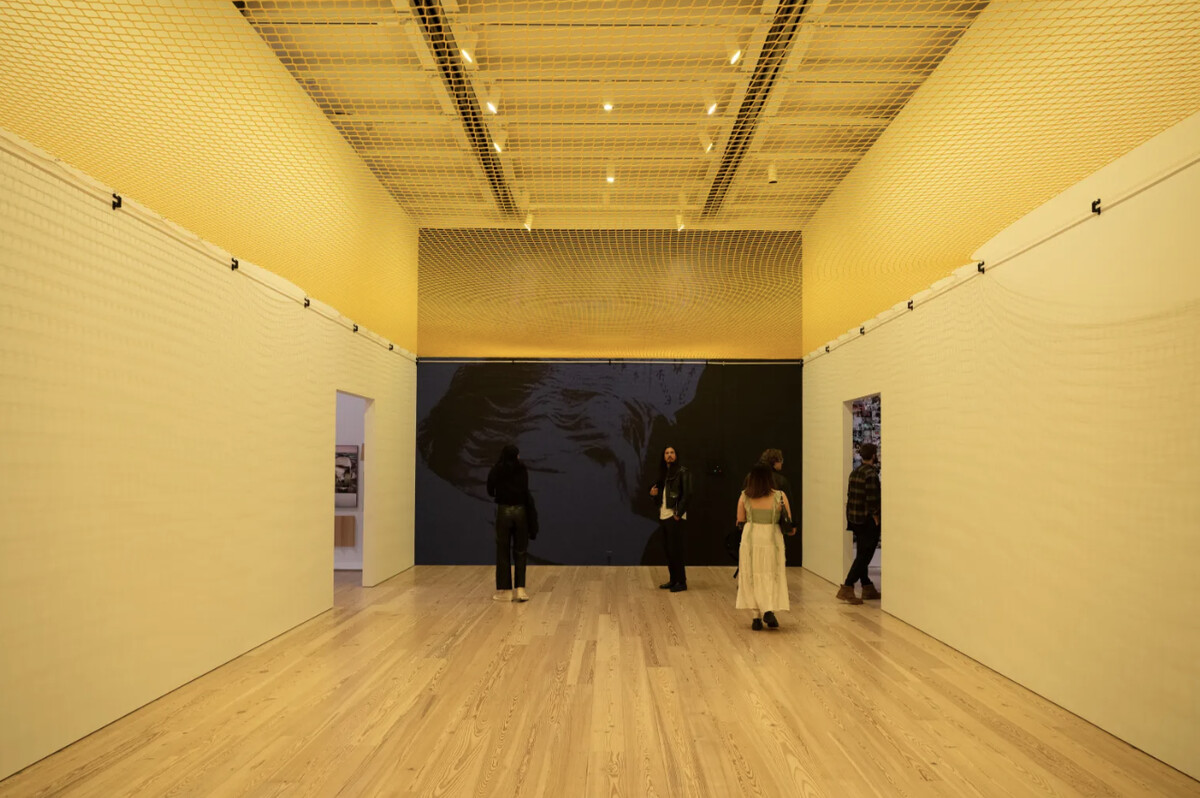
P. Staff, Afferent Nerves and A Travers Le Mal, 2023. Photograph by Filip Wolak
A more “quiet” commentary on our time
The 1993 Whitney Biennial and most of the past editions were animated by scandals and withdrawals, the 2024 edition prefers to be “Quiet as It’s Kept,” in alignment with the title of the 2022 edition. Even when a work spells out a political commentary on our present moment, it’s with subtlety, such as in Demian DinéYazhi’s controversial installation of neon. The telegraphic red missive states, “We must stop predicting apocalypse…” despite the vast human disaster already happening now in Gaza and elsewhere. Initially unnoticed, flickering between the letters, he adds, “’Free Palestine.”
At the time, Eleanor Heartney described the 1993 edition as “social work or therapy.” Conversely, the 2024 Biennial appears more like a “social and narrative test” or an exercise of today’s common sense regarding gender, race, identity and technology. Instead of taking a strong position as in the 1993 edition, most of the works in this Biennial limit themselves to acknowledging the notion of reality as an ideological construct, historically made of symbols and filled with contradictions and tensions.
It is worth quoting the philosopher Slavoj Žižek, who describes philosophers (and artists) as the ones who “find the cracks in the symbolic edifice that grounds” to question them and accept that the common sense of the reality of any particular period is never the whole story but just one possible narrative. It’s the role of artists and philosophers to remind us to take a critical approach to our realities. The artists of the 1993 Whitney Biennial did so with a directness that contrasts with the 2024 Biennial, with its theme of “Even Better Than the Real Thing.” However, this year’s edition proves that although no biennial or exhibition can truly change the world, art can still be political as long as it continues to question.
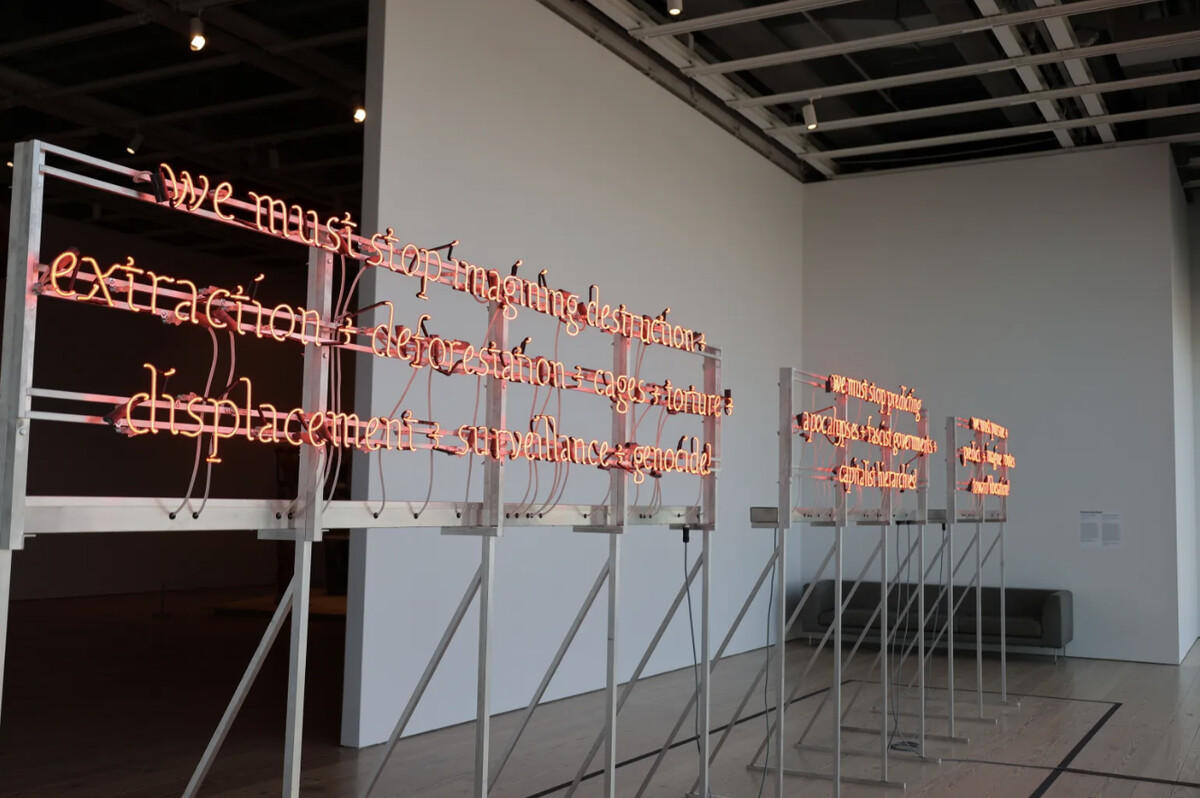
Demian DinéYazhi ́, we must stop imaging apocalypse /genocide + we must imagine liberation, 2024. PhotograpPhoto by Nora Gomez-Strauss
The 2024 Witney Biennial, “Even Better Than the Real Thing,” runs through August 11. It was announced that Marcela Guerrero and Drew Sawyer will curate the 2026 Whitney Biennial.

